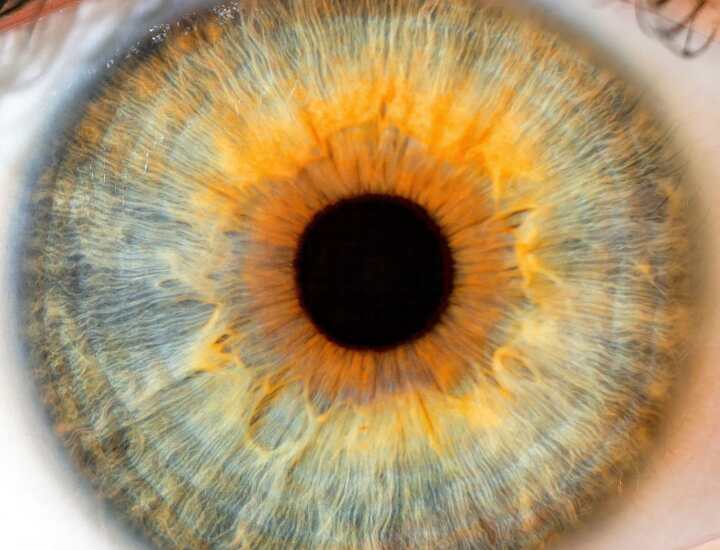There are many other inherited retinal diseases including:
- Bassen-Kornzweig syndrome
- Batten disease
- Bietti’s crystalline dystrophy
- Central areolar choroidal dystrophy
- Congenital stationary night blindness
- Familial exudative vitreoretinopathy
- Fundus flavimaculatus
- Gyrate atrophy
- Refsum disease
- Stationary cone disorders
- Senior-Løken syndrome
- Stickler syndrome

Bassen-Kornzweig syndrome
This syndrome, also known as abetalipoproteinemia, is a form of retinitis pigmentosa caused by a gene mutation (in the MTTP gene), which results in the impairment of the person’s inability to absorb dietary fats.
Symptoms include:
- balance problems
- developmental delays
- failure to thrive in infancy
- muscle weakness (particularly after the age of 10)
- a protruding abdomen
- slurred speech and
- stool abnormalities.
In severe cases, patients can experience neurological damage that can be life-limiting. Dietary modifications and treatment with large doses of fat-soluble vitamins can assist with symptoms.
Batten disease
These group of diseases are severe neurological conditions, which can be life-limiting. There are different types of Batten disease, classified based on the age of onset, and systemic complications. In general, children present with retinal degeneration (similar to RP), seizures and progressive neurological damage.
Bietti’s crystalline dystrophy
This inherited retinal disease (IRD) has higher prevalence in Asia than in the USA and Europe. Onset of symptoms are usually in teenage years, with progressive retinal degeneration leading to significant vision loss by mid-life.
Bietti’s crystalline dystrophy is caused by gene mutations in the CYP4V2 gene and leads to characteristic yellow-white crystalline deposits in the retina and cornea.
Central areolar choroidal dystrophy (CACD)
Central areolar choroidal dystrophy (CACD) is a very rare disease of the macular area, with less than 50,000 persons affected in the USA. 1 It is an autosomal dominant condition which generally begins to cause symptoms in people between 30 and 60 years of age. The condition causes atrophy of the macula, with associated central vision loss.
Congenital stationary night blindness
Congenital stationary night blindness (CSNB) is, at its name suggests, an inherited retinal disease (IRD) where the main symptom is often poor night vision. Visual acuity is mildly to moderately reduced, and the loss is not progressive. CSNB symptoms start from birth, so sometimes children will not be aware that their night vision is abnormal. People with CSNB are also likely to have myopia (short-sightedness), strabismus (turned eye) and nystagmus (uncontrolled, rhythmic eye movements).
Familial exudative vitreoretinopathy
Familial exudative vitreoretinopathy, or FEVR, can be inherited through autosomal dominant (especially FZD4 or LRP5 genes), recessive (commonly LRP5) or X-linked (NDP) inheritance patterns. It is also known as Criswick-Schepens syndrome.
In FEVR, the outer regions of the retina do not have the normal blood vessels, leading to a lack of oxygen in these areas. In response, new blood vessels grow (neovascularisation), which can lead to bleeding and retinal detachments. The disease has variable penetrance – this means that some family members may have significant vision loss, whilst others won’t have any symptoms.
Fundus flavimaculatus
Fundus flavimaculatus is a condition similar to Stargardt disease but varies in its age of onset and severity. When there is macular damage, vision can deteriorate to 20/200, although it usually remains between 20/50 and 20/80. Damage to the macula first appears in the adolescent and early adult years, and the area of damage may gradually spread.
Gyrate atrophy
Gyrate atrophy is an inherited retinal disease (IRD) caused by a mutation in the gene OAT.
Clinically, the retina shows large areas of damage, which look like paving stones. Affected individuals usually have night blindness as children, with a progressive loss of vision later in life.
Management includes dietary modifications, by avoiding foods high in a compound called arginine (such as nuts, seeds, cereal, dairy products, seafood, meat, chicken, watermelon, and chocolate). Vitamin supplementation can also be helpful.
Refsum disease
Adult Refsum disease is a rare metabolic disorder that occurs in 1 in 1,000,000 people. 2 It is characterised by peripheral nerve damage due to phytanic acid buildup from dietary sources. Individuals are asymptomatic at birth, and don’t develop symptoms until late childhood to teens.
The main syndromic manifestations of Refsum disease are retinitis pigmentosa (RP), ataxia, deafness, loss of smell, sensory neuropathy, and bony changes (particularly in the fingers and toes). Management includes dietary changes to limit the intake of phytanic acid, which is found in dairy, beef, lamb and some seafoods.
Stationary cone disorders
Stationary cone disorders are present at birth and have symptoms of decreased vision, decreased colour vision and sensitivity to light. The symptoms do not worsen with age due to the gene mutation, but patients may be at risk of other complications (for example, high short-sightedness may lead to a higher chance of a retinal tear or detachment).
There are several types of stationary cone disorders (for example, cone monochromatism, blue cone monochromatism, dichromatism, trichromatism), with differing prognoses for visual acuity.
Senior-Løken syndrome
This very rare disorder is characterised by the combination of a kidney disease called nephronophthisis and the IRD, Leber congenital amaurosis. There are 10 known genes that can cause this syndrome, which is inherited in an autosomal recessive manner.
Stickler syndrome
Stickler syndrome is the general term for a group of diseases which affect the connective tissue in our bodies, known as collagen. Stickler syndrome can result in a cleft palate, joint abnormalities and arthritis, and hearing loss. In terms of vision, people with Stickler syndrome can get a range of retinal complications, most notably retinal detachments.
